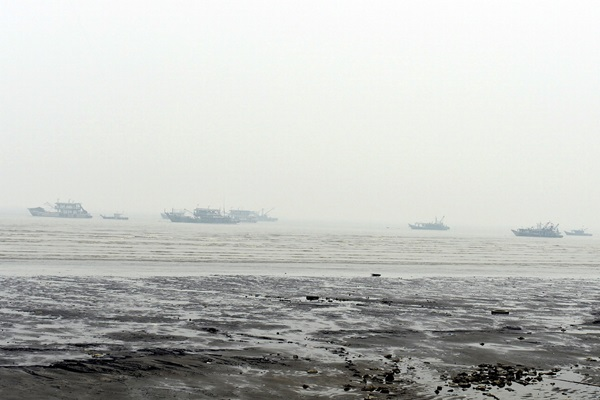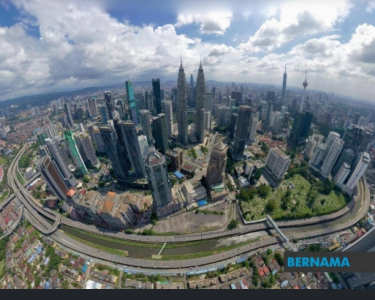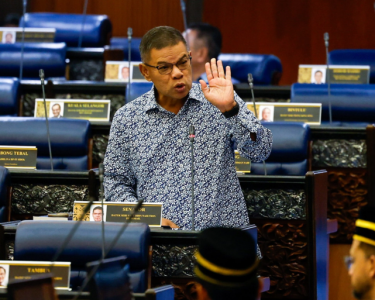
KUALA LUMPUR, Sept 16 (NNN-BERNAMA) – A real way to minimise the risk of worsening transboundary haze in the ASEAN region is to deal with the root physical and political causes of fires and haze.
University Malaya’s Department of International and Strategic Studies senior lecturer Dr Helena Varkkey said ASEAN’s vision of a haze-free region by 2020 is very much dependent on Indonesia’s political will to effectively handle the fires internally and accept assistance in a timely manner.
During the current round of transboundary haze, Indonesia has been reluctant to accept assistance from Malaysia.
“We are not sure if there will be another round of big fires next year. However, whether this will result in regional haze will very much depend on prevention efforts by Indonesia, which will hopefully be put more strongly in place after this round of fires die down.
“But we must remember that one transboundary haze-free year, even if 2020 is haze-free, does not mean the following years will also be haze-free,” she told Bernama in an email interview.
Over 4,000 hotpots were detected in Indonesia’s central and western regions with local authorities deploying personnel to combat fires that were contributing to the haze blanketing the region.
The Indonesian government was said to have sealed off plantations, including concessionaires owned by foreign companies, over open burning.
Meanwhile, the transboundary haze from forest fires in Kalimantan and Sumatera has caused the closure of hundreds of schools in Sarawak and Johor as the Air Pollutant Index reading by the Environment Department showed that air quality in several districts in the two states dropped to very unhealthy level.
However, the Indonesian government has again refused to acept the blame, claiming that the smog affecting Kuala Lumpur originating from Sarawak and Peninsular Malaysia.
It rejected Malaysia’s complaints about hazardous smoke drifting from its forest fires across the border, saying that fires were also raging in parts of Malaysia and on Malaysian-owned plantations in Indonesia.
Varkkey said pointing fingers at each other was not helpful, as President Joko Widodo, for the past few years, lamented that even though there had been forest fires in Indonesia, this has not caused transboundary haze.
On the other hand, Malaysia relies on the regional ASEAN Specialised Meteorological Centre data that shows that most of the smoke was indeed coming from Indonesia.
“However, we must also admit that we do have some fires on our territories as well, even though they are not as big (as that of Indonesia’s) — this should not be glossed over.
“There is also the continuous background issue of Malaysian plantations operating in Indonesia which may also have a role in land clearing that directly or indirectly causes fire,” Varkkey said.
She added that both countries should look beyond blame about the cause, and instead focus on the solutions — initiate effective cooperation on prevention activities, and quickly coordinate transborder assistance at the early stages of the fires.
An example of preventive activity was re-initiate the old memoranda of understanding between the countries on land use and fire management training, Varkkey said.
She pointed out that the conditions on the ground was very much dependent on weather such as El Nino and Monsoon winds that cause drought and winds that blow the smoke over vast distances, and some years have more favourable weather than others.
To attain the vision of a haze-free region, ASEAN countries need to take prevention measures such as building canal blocks to ensure peatlands, both pristine and those already developed, stay wet and non flammable; protecting sensitive forests from clearance; and strictly controlling fire use for agriculture and plantations.
Varkkey said short-term solutions such as masks may help to reduce irritation and may make people braver to continue to work and carry our normal activities, but most masks cannot filter out smaller particles that are harmful to health in the long-run.
“In the broader sense, there is increased health costs that is spread across the population. More and unbudget spending on clinic and hospital visits, as well as medication and implements such as at pharmacies.
“Man hours are lost due to sick days taken, or if children are sick, parents need to take days off to care for them. This means a drop in productivity across all sectors,” she noted.
Overall, Varkkey said the impact to the economy will be dependent on how severe the haze was, and how long it would last.
She pointed out that the impact is not easy to quantify and usually, quantification could only happen after haze episodes.
The agriculture sector may suffer too, if the haze persists for a long period, as crops failed due to reduced rates of photosynthesis.
NNN-BERNAMA






